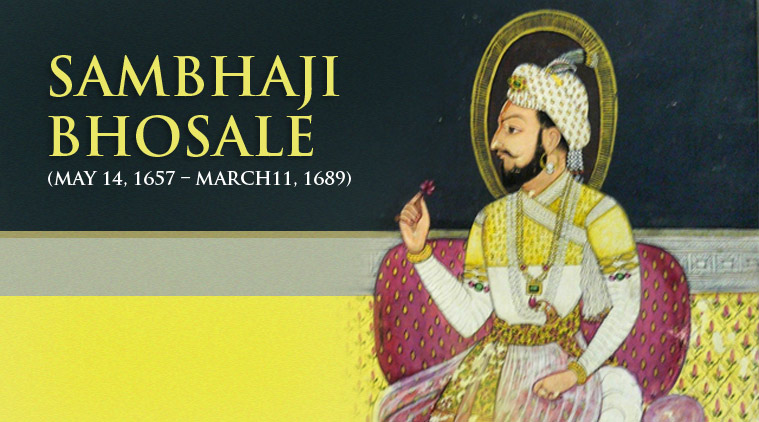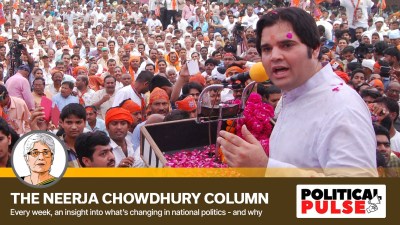- India
- International
Sambhaji Maharaj: Chhatrapati Shivaji’s son whose valour spurred the Marathas
Sambhaji Maharaj Jayanti 2020: In his short rule spanning nine years, Sambhaji gained recognition for his valour and patriotism. He continues to be celebrated, particularly in Maharashtra, as the ruler who chose death over conversion.
 The eldest son of the celebrated Maratha emperor, Chhatrapati Shivaji, Sambhaji was the second ruler of the kingdom after his father’s death. (Wikimedia Commons)
The eldest son of the celebrated Maratha emperor, Chhatrapati Shivaji, Sambhaji was the second ruler of the kingdom after his father’s death. (Wikimedia Commons)
The eldest son of the celebrated Maratha emperor, Chhatrapati Shivaji, Sambhaji was the second ruler of the kingdom after his father’s death. (Wikimedia Commons)In the autumn of 1687, the Mughal and Maratha forces faced each other in the dense forests near Wai and Mahabaleshwar in Deccan India. The Battle of Wai, as it came to be called, was won by the Marathas, but during its course, the dynasty lost out on one of its most significant leaders — Sambhaji Maharaj. The eldest son of the celebrated Maratha emperor, Chhatrapati Shivaji, Sambhaji was the second ruler of the kingdom after his father’s death. In his short rule spanning nine years, Sambhaji gained recognition for his valour and patriotism. He continues to be celebrated, particularly in Maharashtra, as the ruler who chose death over conversion.
A dramatic accession
Chhatrapati Shivaji passed away in April 1680, and for a good nine months Sambhaji was entangled in a bitter accession struggle with his half-brother Rajaram, who was 10 at the time. Soyrabai, Sambhaji’s stepmother and the mother of Rajaram, plotted against to keep him away from the throne. Ultimately though, Sambhaji gained the support of Maratha commander-in-chief Hambirrao Mohite and in January 1681 was officially crowned ruler of the Marathas. Rajaram, Soyrabai, and their associates were put under house arrest.
Face-off with the Mughals
The Mughals were the staunchest enemies of the Marathas during Sambhaji’s reign. One of the first major actions taken by Sambhaji against the Mughals, was when his forces attacked Burhanpur, a wealthy Mughal city in Madhya Pradesh. Sambhaji had planned the attack, being aware of Mughal emperor Aurangzeb’s plans to expand into the Deccan. Burhanpur was an important trading center and Sambhaji’s attack came as a huge blow for the Mughals.
For the next six years, between 1682 and 1688, the Marathas under Sambhaji and the Mughals under Aurangzeb were engaged in multiple battles in the Deccan. The Mughals wanted to acquire possession over the forts held by Marathas in Nashik and Baglana regions. In 1682, they attacked the Ramsej fort near Nashik. However, despite months of failed attempts, the Mughals failed to take control of the fort and were forced to retreat. The Ramsej fort had become an important morale booster for the Marathas.
Battles with other important 17th century dynasties in India
The Marathas under Sambhaji also came into conflict with the Abyssinian Siddi rulers who wished to acquire control over the Konkan coast. Sambhaji fought them, restricting their presence to the island of Janjira, located in the present-day Raigad district of Maharashtra. The Siddis were also stopped from intruding into Maratha regions.

Sambhaji also led a campaign on the Portuguese colony of Goa in late 1683. The Portuguese colonists were thoroughly weakened by the Maratha raid, and sought help from the Mughals. Sambhaji was forced to retreat from Goa in January 1684, with the arrival of the Mughal army and navy.
In 1681, Sambhaji also attempted to take control over Mysore, then ruled by the Wodeyar king Chikkadevaraja. However, he was driven back from there.
A valiant surrender to death
The Maratha commander-in-chief, and one of the most important supporters of Sambhaji, Hambirrao Mohite, was killed in the Battle of Wai in 1687. While the Marathas were victorious in the battle, the execution of Mohite, came a blow to them, and a large number of Maratha troops began deserting Sambhaji. In January 1689, the latter was captured by Mughal forces.
There are variegated historical accounts of what happened thereafter, but almost all of them point to the fact that Sambhaji was asked to surrender all his forts and treasures, and finally to convert to Islam. Sambhaji refused to do so, and as result was put to a torturous death.
The act of protecting his faith over life earned him much praise, particularly among Hindu nationalist historians. Historian Y.G. Bhave, in his book, ‘From the Death of Shivaji to the Death of Aurangzeb: The Critical Years,’ writes about Sambhaji: “His leadership of nine years had been quite inspiring for the Maratha spirit of resistance. But his death by torture at the hands of the fanatic Moghul emperor set the Maratha hearts on fire.” The capture and death of Sambhaji is believed to have infused new determination among the Marathas to overcome the Mughal power.
Apr 25: Latest News
- 01
- 02
- 03
- 04
- 05







































